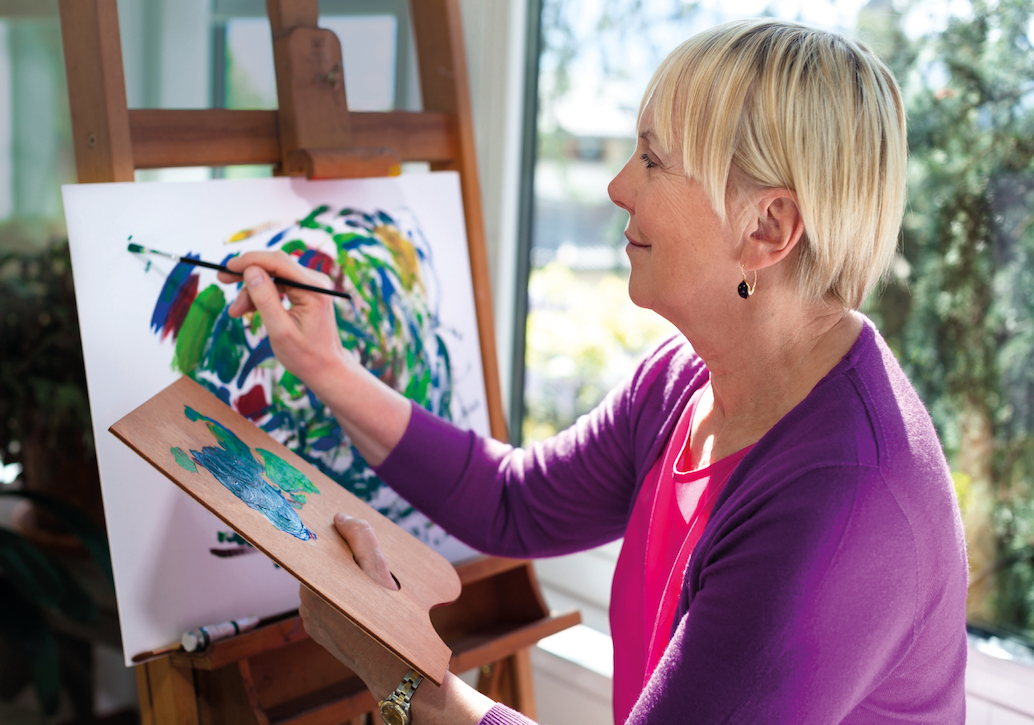By Natailie Zizzo & Dearbhail-Rochie
While most of us will have at some point wondered what happens after death, fewer will have thought about what dying is actually like or what a good death might look like for them. This is especially relevant in the context of today’s world of high-tech medicine. The prevailing cultural norm is a hesitancy to accept mortality, and politeness dictates that such topics should not be discussed openly.
Although up to 75 per cent of Canadians say they would prefer to die at home, most actually end up dying in hospital. In fact, compared with Europe and the USA, Canada has the highest number of deaths in the acute-care hospital setting. However, most of us remain naive to this reality and what it entails—until a loved one passes.
In real life
On television, death is often thwarted—CPR saves a person’s life 70 per cent of the time and half of the survivors get to go home by the end of the episode, right as rain. Consequently, we have come to expect that lives can be saved or extended by extraordinary medical measures. But, in reality, CPR has an immediate survival rate of less than 37 per cent and a long-term survival rate of about 13 per cent.
Our expectations are matched by a health care system that views death as a failure. In an effort to escape death, we may undergo chest compressions, ventilation, dialysis, surgery, feeding thought a tube and intravenous hydration. These interventions can and do save lives. But all too often they are associated a quality of life that many of us would not want or would find intolerable. It is crucial, then, that we consider what we want at the end of life and what a “good death” might look like for us.
Discussing preferences
Unfortunately, most people do not reflect upon or discuss their preferences for end-of-life or urgent care ahead of time, with only 10 per cent of Canadians having ever spoken to their health care provider about their wishes for care. In many cases, a family member or close friend must make choices on behalf of the patient, becoming a surrogate decision-maker. Ideally the surrogate is guided by the patient’s preferences, either as outlined in a care plan or as previously discussed. However, a 2015 survey revealed that only 20 per cent of Canadians have an advance care plan, and only about half of us have discussed treatment and end-of-life preferences with our loved ones. This lack of transparent discussion can lead surrogate decision-makers to experience stress, guilt and doubt for months or even years after the event.
The burden of not talking about death extends beyond individual experiences to larger societal issues such as health care spending. In Ontario, for example, five billion dollars a year is spent on the care of people in their last year of life; in the last 30 days of life, the average person generates $14,000 in health care costs. If you compare these costs to regions where advance care planning is not only normalized but is expected, you will see that health care spending goes down. It turns out that talking about death and dying and discussing patient preferences ultimately results in a course of treatment that costs less. These discussions are therefore important on both personal and societal levels.
We need to talk openly about dying; Canadians need to understand the reality a medical death entails, think about their preferences and make their wishes known. There is a general belief that planning for future health care is uniquely for sick or elderly individuals. However, medical emergencies can strike at any age and can affect anyone. Making sure Canadians of all ages and health statuses engage in these discussions can ensure people are treated in line with their personal preferences. Discussions about death in medicine are slowly becoming more prominent, but broaching this topic remains challenging and even taboo.
Using art as therapy
To address the taboo, innovative strategies are required. One such strategy is the use of art. As art therapy has proven, engaging individuals in the creative process can help them gain self-awareness, cope with stress and work through traumatic issues in a range of contexts. Viewing art has also been shown to be an excellent means through which to broach difficult topics, helping individuals to understand and think questions through in their own way. When it comes to medical death and dying, where we often struggle to talk openly about our hopes, concerns or wishes, art can be used to stimulate and mediate responses. Art provides the viewer with multiple ways to interact with an issue, and a single piece can offer many different interpretations.
Art also provides an innovative way to engage the public and health care providers on health issues in a shared safe space. Too often, health promotion has relied on conventional means to convey health messages—but, by their verboten nature, taboo health issues must be explored through unconventional means. We must create neutral spaces where people from all backgrounds can come together to confront difficult issues; an art exhibit creates one such space where people are encouraged to learn, feel and reflect. It provides an area that viewers can step into at their own pace, and step down and away when the view is too intense.
We recognize that discussions about death and dying, and the deep emotions of grief, loss, love and heartache that come with them, are never easy to face. But the experience can be made easier and a dialogue can be opened through art.
Natalie Zizzo and Dearbhail Bracken-Roche are part of the communications team at Taboo Health. A previous version of this article was originally posted on The PH Collective.













